When telegraph lines were first installed in the US and Europe in the mid-1800s, people complained of sightings of ghosts traveling along the wires. In 1848, two sisters in a village near Rochester, New York claimed that rapping coming from the floorboards of their bedroom were Morse-code messages from the dead. Telephones and electric machines were viewed with suspicion, and theater performances often portrayed them as vessels of magical powers. Such supernatural interpretations of emerging technology chimed with popular fascination with the Gothic, which functioned as a nexus for a variety of anxieties: the intrusion of the colonial Other into everyday life (symbolized as the inhuman monster or vampire), fear over women’s desire for professional and sexual freedom, and above all, the rapid modernization of daily life.1 From the 1700s on, the Gothic assumed its primary form in the novel. Fittingly, women constituted a large part of its audience—the Gothic novel often used architecture and private space to address questions of domestic life and the role of women. Old, creaky, labyrinthine houses (such as the Bates house in Hitchcock’s latter-day Gothic Psycho) became mainstays of the genre, serving as metaphors for both the constraints on women’s lives and the suddenly outdated lifestyles that would not go gently into that good night. The architectural elements of these sites also became characters in themselves, aiding and abetting the horrors that went on within.
In its barest bones, the Gothic is a clash of the old and the new, weighted toward the former as it struggles with its own obsolescence. By focusing on the domestic sphere, authors of Gothic novels could reflect on or directly channel those changes that were so difficult to fully comprehend. The sheer unknowable “otherness” of Gothic villains—their monstrosity, vampirity, non-humanity—reflects not only the scale of these great domestic alterations, but also that of the inability to make sense of them.
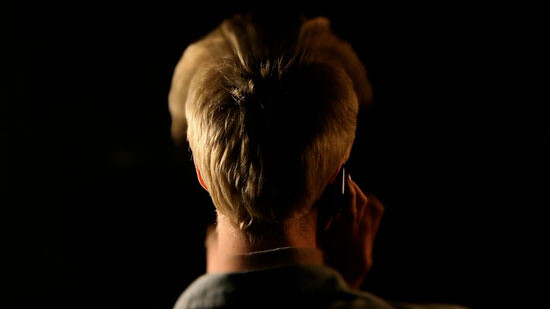

A similar substrate of anxiety and domestic disruption can be found in recent moving image work. Their reappearance or re-conjuring in these settings suggests a return of the Gothic as a way to wrestle with daunting, ongoing questions prompted by current technological shifts: How has the internet affected our sense of self? Our interaction with others? The structures of family and kinship? The return of the Gothic, which navigates between old and new and holds ties to an earlier era of rapid technological change, complicates the popular notion that post-internet art is concerned with a featureless and anonymous present. Coded and significant mise-en-scènes, anachronistic details, and forms of the digital uncanny upset the idea that moving image work dealing with new technologies is a-psychological or abstract in character. Rather, a preoccupation with the Gothic tropes of the uncanny, the undead, and intrusions into the home show how notions of the individual, the family, and the domestic are in fact being newly contested. These features and impulses underscore a number of recent art films and videos by artists such as Mark Leckey, Ed Atkins, Shana Moulton, Ryan Trecartin/Lizzie Fitch, and Laure Prouvost, many of which take the internet and the digital as a primary subject. It seems, in looking through this work, that Gothic tropes are returning as a reaction to the unprocessable changes of the “information age.”
Last year, Mark Leckey’s touring exhibition entitled The Universal Accessibility of Dumb Things (2013) addressed techno-animism, or as he put it, the fact that we are surrounded by “devices that bring non-living things to life.”2 Bringing together stereo systems and other machines, talismanic objects, fossils, “prop-relics” (props from TV shows and films that have achieved the status of both sculpture and documentation3), 3D models, and “spirit creatures,” the show crystallized a fascination with the agency of objects and object-to-object relations that one can see in other arenas, such as the questions of thingness and objecthood (for example, in the work of Hito Steyerl) and Massimiliano Gioni’s Venice Biennale (in which a number of the artists under discussion here featured), with its exploration of the fetish object and mystical or supernatural icons. All these inquiries return to the physical object at a moment when, firstly, the object itself is endowed with more power (phones, cars, and fridges have become “intelligent”), and secondly, when digitization and dematerialization promise a world made of pure ether. They also ask the same question posed by the Victorian Gothic when it bestowed supernatural powers on new technologies: How do these objects function autonomously from human power? (Notably, Freud’s essay on the uncanny was written roughly during this same period, in 1919.) The link, aesthetic and otherwise, between current work and the Victorian age is in some ways explicit: Leckey’s exhibition design, for example, deliberately referenced Victorian modes of display such as the diorama, and positioned visitors so they would look at the assembled goods from a remove rather than circulate among them.4 The significance of the connection to the Victorian Gothic, however, goes beyond that of the digital uncanny. The way these works associate horror and intrusion with new forms of visual and reproductive technology suggests that the traditional subjects of the Gothic novel—mainly the home, and the identities sustained within it—are now being radically reorganized, similar to the way the introduction of the TV reorganized domestic life in the 1950s.
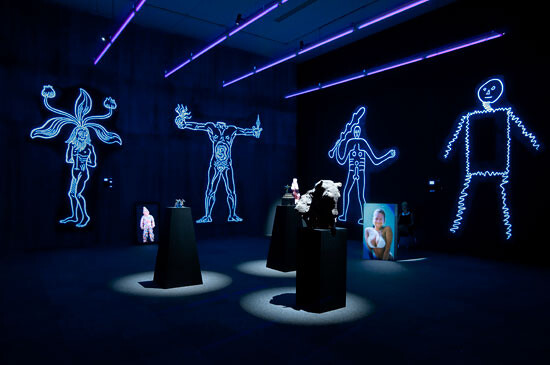

Leckey’s film Made in ’Eaven (2004), for example, shows a digital recreation of Jeff Koons’s Rabbit (1986) in the middle of an antiquated front room, complete with a fireplace and drafty sash windows. The space is Leckey’s studio, recognizable from other videos of his. This sense of familiarity is reflected materially in the 16 mm stock on which the film is shown—a warm graininess that contrasts with the cold digital representation of the silver rabbit. The “camera,” or the point of view represented as such, circles the rabbit, but is never itself reflected. Indeed, the rabbit only ever shows its surroundings, but not the artist who films it. As a symbol captured in a place of creation (the studio), the rabbit can be read in various ways: as a representation of the anxiety of artistic influence; as the pressure to produce something as cold, hard, and cash-generating as the Koons rabbit; as the vacuity of the Koons rabbit itself; or as a figure of postmodernity, with its deliberate banality and consumerism.
The conflict Leckey sets up in Made in ’Eaven is one between this uncanny outsider and the warmer, familiar space within—a conflict borne out by the technological disjunction of 16 mm and HD, and the refusal of the bunny to reflect any glimpses of a human or human labor. In Ed Atkins’s A Primer for Cadavers (2011) and Us Dead Talk Love (2012), digital technologies are similarly figured as the animate-inanimate. In these videos, the digitally rendered dead look back on what the world was like when bodies had materiality and all that comes with it: hair, nails, and abject bodily functions. In an interview with Hans Ulrich Obrist, Atkins clearly linked this state of the cadaverous to new digital technologies and their immateriality:
Cadavers became the best way to look at representation and, in particular, recent technologies of representation. There is the push in industrial cinema towards high definition and 3D, and at the same time the body of cinema is falling away: there is no celluloid, no tape, no DVD. All you are left with are these reams of code, which, to a certain extent, simply haunt different media.5
Similarly with Made in ’Eaven, the conjunction of old and new media in Shana Moulton’s video work also represents an intrusion, here of the insidious advertising of the American pharmacological industry into her bedroom. This broadcast break-in suggests the flipside of the Victorian panic around the entrance of germs into the home, which could be detected, and entered into popular conscience, thanks to the advent of microbiology. In her video Restless Legs Syndrome (2012), Moulton is shown lying in bed watching TV when a commercial for a drug called Mirapex comes onscreen. (The TV is, notably, positioned in front of an unused fireplace.) As she watches in bed, Moulton’s legs multiply and begin twitching; at another point, three vaguely body-shaped, logo-like figures rise out of the TV screen and dance over her prone body. Again, different technologies meet on the picture plane: the seamless diegetic space of her bedroom set, and the clumsy animations of the twitching legs and dancing figures. Although this particular work does not employ the macabre style one associates with the Gothic, the plot is familiar: strange creatures born of technology appear in the bedroom of a young woman, lying alone.
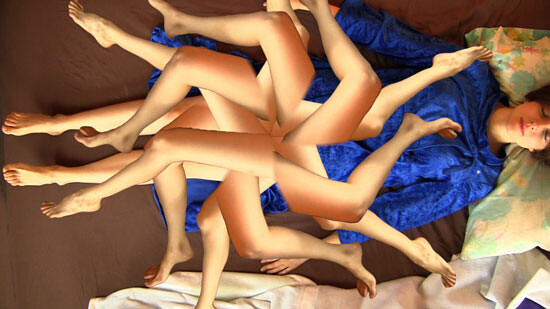

The site of these collisions of old and new is revealing: While Atkins and other artists such as Oliver Laric use the non- or pseudo-space of a computer screen as a backdrop, other artists use a domestic background—often the artist’s own home (something consonant with the YouTube-esque feel of some of these works). As in the historical Gothic, the domestic sphere is used to personify the familiar, and as such it becomes a character in itself. In Restless Legs Syndrome, a mouth and hands appear behind apertures in the wall, so that the room talks above Moulton’s head. The threat is to the house and, by extension, the ways of living its walls contain.
The architecture of video itself is emphasized in the installation displays of many of the works mentioned above. In a move that again links these works to the prop-relic or the object endowed with agency, videos by Moulton, Trecartin, and Prouvost are shown in tandem with different structures and props that echo scenes from the respective films. Trecartin/Fitch’s seven-part cycle, Any Ever (2011), portrays characters in various reality TV-like sites (bedrooms, gyms, airplanes). The different chapters of the video were shown in separate rooms at MoMA PS1 and elsewhere, each of which conjured a semi-indeterminate locale: the body of an airplane, a boardroom, a rec room, and so forth. Trecartin/Fitch’s installation acknowledges the varied viewing conditions in which moving image works are now regularly seen: “any ever” space can be rendered, via computers and tablets, into a private viewing space. Moreover, as Maeve Connolly wrote in a text on the tendency of televisual objects to be displayed in such installations, these objects “strongly emphasize use and interaction … privileging affective relations that bind the humans and the objects encountered in fictional narratives.”6 Littered in front of the screen, the items from the film or video extend the haptic space of the on-screen work into the literal playing field of the viewer, bringing him or her further into the affective and bodily resonances of the work.
In art criticism about works that address the internet, Trecartin is now almost ritually invoked. This is perhaps the case because so few other artists have tackled the internet as both a style and a highly efficient mass dissemination machine. Trecartin originally emerged as a very young artist posting all of his videos on the internet, flouting the normal channels of art distribution. (Like many “non-art” YouTube videos, these by and large featured a cast of his friends.) In Any Ever, however, he returned, with a bang, to the material—something consonant with the trend of the past two decades toward the use of film paraphernalia (projectors, celluloid film, gels, and the prop-relic) within exhibition spaces. We see a push-and-pull between the material and immaterial in both Trecartin’s own practice and its critical reception; he posts his work online while at the same time thematizing this setup in exhibition contexts. Significantly, Trecartin’s deliberate McLuhanesque equation of medium and message counters what has become the dominant view of film and video in our digital age: that medium itself has been devalued. Even the idea of a medium, as Francesco Casetti has written, has become a “cultural form: it is defined [instead] by the way in which it puts us in relation with the world and with others, and therefore by the type of experience that it activates.”7 It is to be understood as the full sensory experience of film, and not as the strips of celluloid with which it shares a name—a return to the earlier, pre-1930 theorizations of film, which, as Casetti shows, privileged the response to the cinema rather than the making.
While the ebbing importance of medium holds largely true in the realm of film studies, which concerns itself with mainstream work, this is less the case in artists’ moving image work, which has developed from a tradition in which the medium is a powerful signifier—hence my argument that the use of hybrid technologies in some of these works is still intended as legible and meaningful. One could even speculate that the fetish of the film strip has been replaced by the prop-relic object in the gallery: it likewise displays the talismanic potential and material grounding previously associated with cinema as film.
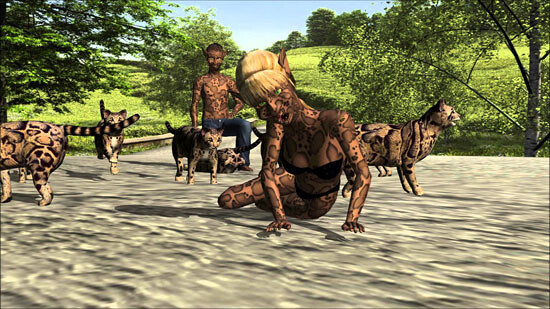

When they first appeared, the photograph and the filmstrip were both regarded as sites of ghostly exchange. This view remained prevalent well into the twentieth century; André Bazin famously commented that film is “time mummified,” a notion that, even though formulated in 1958, harkens back to both the idea of necromancy and the Victorian fascination with Egyptian techniques for preserving the body. In the nineteenth century, popular lore held that photographs would steal your soul, and photography’s association with death has been thoroughly explored. One can only imagine what an eerie and extraordinary experience it must have been to look for the first time at the face of someone missing or dead. The photograph symbolized the “collapsing of time and distance”8 achieved by telegraphs and railways (a process signficantly advanced by the internet today). The supernatural was used to explain technological operations that were not immediately visible, such as the exposure and development of a photograph, but also more “mundane” processes like electricity or telegraphs. The prop-relics that accompany the digital works replicate this function of the supernatural: they retain the mystery of the event and the otherness of the world beyond. They provide a way of making real the immaterial visualizations on screen, while also making the real virtual, bringing the viewer into the fictional world on display.
For example, Trecartin’s long-form work, A Family Finds Entertainment (2004), adopts a horror-story plot and Gothic tropes, including the walking dead. In the video, a strange child, Skippy, plays upstairs while his parents are downstairs. Skippy, who is played by Trecartin, leaves the house and is run over by a car; this incident is relayed to another family member, also played by Trecartin, and at the end of this conversation, Skippy returns, apparently alive. The video explores the fracturing of a typical US family. Seen from the perspective of Skippy, it is a banal parody of suburban domesticity; life in the suburbs is presented as so boring that a family will entertain fantasies of the death of one of its members simply for something to do.
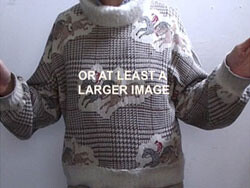

The importance of the domestic sphere in these works relates to the patterns of behavior instituted by television, the immediate technological precursor to the personal computer. Connolly argues that the recurrence of the television as a leitmotif underscores “the important historical relationship that exists between broadcasting and domesticity.”9 TV has been theorized as reorganizing domestic time around sitcom schedules, and domestic space—especially the livingroom—around the television set (as opposed to the fireplace). The internet—and more specifically YouTube and other such platforms (Hulu, College Humor, BBC iPlayer, Ubuweb, and so forth)—represents a similarly large-scale shift in the family space, from one of collective viewing to one of atomized individual viewing. The family home, particularly with “old world” effects such as the fireplace, thus reappears in these videos as a significant locale precisely at the moment it is being lost.
The anxiety evoked in Trecartin’s films derives from their need to visibly perform the everyday—what Matthew Buckingham, in a film of a different tone (Situation Leading to a Story [1999]), called “the familiar awkwardness of people performing their identity for a story without a plot.” The multiplication of characters and selves played by Trecartin, and Trecartin/Fitch in Any Ever, underscores this sense of a splintered and recursive need, brought on by the camera, for the self to be actively and constantly performed.
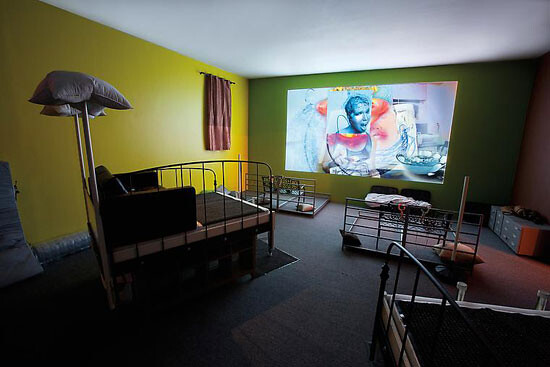

Prouvost’s films likewise use this mode of the artist talking, often antagonistically, to a remote and undefined audience. In Monolog (2009), filmed in her home, the artist seeks to turn the domestic setting into a definite place by means of almost anachronistic, quaint details: pointing out a mouse that runs across the room in front of the screen, or remarking on the fabric of the seats. Her more narrative film The Wanderer (2012) follows a terrified protagonist on the run; it is an adaptation of a translation of Kafka’s “Metamorphosis” by a writer who knows no German. The drama of the work ends at a stately home where the main character, Gregor Samsa, tries to burn a flatscreen TV in a grand fireplace (here, again, the fireplace and the TV). Notably, the installation of the film also replicated elements from its scenery. At this point in the film, time bifurcates: the characters freeze like the automata or wax characters in nineteenth century museums, while a modern-day tour visits the historic house. If this is a meeting of old and new, it is one surrounded by profound incomprehension: Samsa’s confusion is compounded by the mistranslation. Prouvost’s “wanderer” is a fictional character in a real world, one struggling with his own existence in time. Neither he nor we will ever know what haunts him.
The grouping of artists together here under this loose rubric of the Gothic is meant to highlight the ways in which these artists, and others, are representing the fears that accompany change—changes that now, like in the Victorian age, are ushered in by major technological advances. Along with typical Gothic tropes and plot lines, it is the explicit negotiation with the past that most keenly links these works to this nineteenth-century literary movement. Even in artists who are now considered digital natives, it is indeed curious to see which aspects of the internet and the digital are figured as already natural, and which still occupy that ambiguous and frightening territory of the uncanny.
In Central Europe, the Gothic also had to do with the changing political landscape, where power was shifting from the nobility to the bourgeoisie. Elites were no longer granted their place via parentage, but rather by socioeconomic success. As a result, power rested not in the bloodlines of a certain family, but with a group of individuals who came to be identified with the nation-state. This change provoked a popular obsession with bloodlines and with blood itself as a signifier of identity, as evidenced in folktales and Gothic novels such as Dracula. See Robert Mighall, A Geography of Victorian Gothic Fiction: Mapping History’s Nightmares (Oxford: Oxford University Press, 2003).
See Leckey’s YouTube video “Proposal for a Show,” December 17, 2010, which was made before the exhibition opened at Nottingham Contemporary: →.
See Alexandra Keller and Frazer Ward, “Matthew Barney and the Paradox of the Neo-Avant-Garde Blockbuster,” Cinema Journal 45, no. 2 (Winter 2006).
In an essay on Mike Kelley’s show The Uncanny, Christoph Grunenberg notes that the public museum arose at the same time as the Gothic novel, and since then, “public enlightenment and the darkness of supernatural horror have been engaged in a tug of war.” He also remarks upon the “spectacles” of the “animation of dead matter through the illumination of sculpture galleries with flickering candlelight and the staging of elaborate illusionary tableaux,” a setup that was once common in museums. See C. Grunenberg, “Life in a Dead Circus: The Spectacle of the Real,” in The Uncanny (Liverpool and Vienna: Tate Liverpool and MMK, 2004), 59. Exhibition catalog. Mike Kelley’s The Uncanny is a clear precursor of Leckey’s Universal Accessibility of Dumb Things.
Hans Ulrich Obrist in conversation with Ed Atkins, Kaleidoscope 13 (January 2012), →.
Maeve Connolly, “Televisual Objects: Props, Relics and Prosthetics,” Afterall 33 (Summer 2013): 77.
Francesco Casetti, “The Relocation of Cinema,” NECSUS 2 (Autumn 2012).
See Introduction, The Victorian Supernatural, eds. Nicola Bown, Carolyn Burdett and Pamela Thurschwell (Cambridge: Cambridge University Press, 2004), 1.
Maeve Connolly, “Televisual Objects,” 77.
